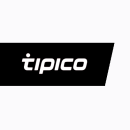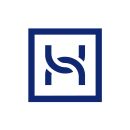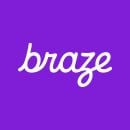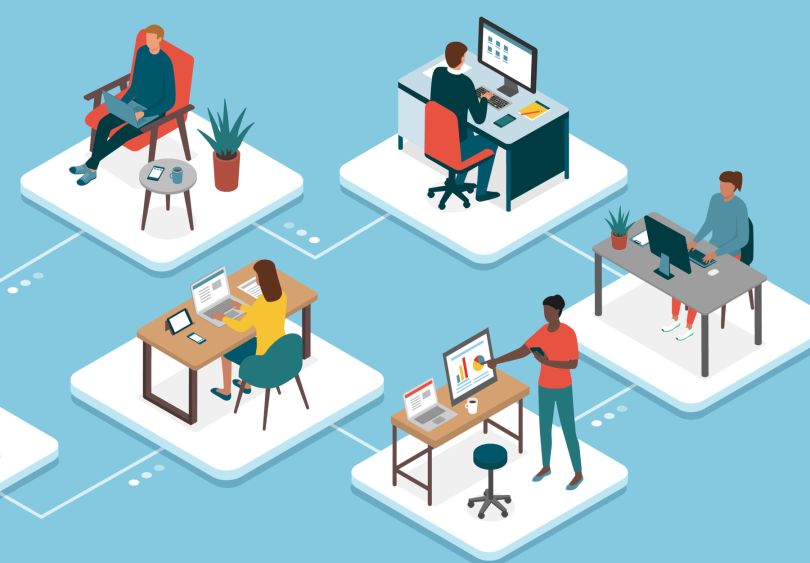
As a result of the coronavirus pandemic, many HR leaders have had to reconfigure their onboarding processes to ensure new hires feel welcome, connected and prepared — all through a small screen.
In New York, healthtech company Healthify introduced department-wide “get-to-know-you” lunches as a way to help new hires connect with existing team members and create a sense of community, People Operations Manager Jessica Canderan said.
Meanwhile, at customer engagement platform Braze, Learning and Development Specialist Grace Barrett said they’ve rolled out video calls and customized Slack channels to help new hires feel welcome during the onboarding process.
HomeAdvisor has also implemented video calls. Kyle Taylor-Mcleggan, a sales trainer at the home improvement platform, said that since transitioning to remote onboarding, “all day Zoom rooms” have helped create camaraderie between new hires and existing employees.
Canderan, Barrett, Taylor-Mcleggan and a few other experts across the city shared with Built In NYC how they continue to overcome remote onboarding challenges.

Howl is a technology platform for brands to unlock, manage and grow their product reviews on the open web. In order to organize a more seamless onboarding process, Howl brings on hires in cohorts and reserves one day a month for new hires to start, Head of Talent Nathalie Rodriguez said.
What’s the biggest challenge you’ve faced onboarding new employees remotely?
Like most startups, a lot of our learning happened organically with shadowing meetings and listening to calls and conversations. With being remote, these conversations have happened less and the ones that did happen were via premeditated Google Hangout invites.
How have you overcome this challenge?
We created a completely new onboarding program. It consists of five sessions that take place throughout the hire’s first week. These sessions are moderated and run by our leadership team, which gives them early visibility to our C-suite as well as insight into our big picture strategy.
It’s also always great to hire in cohorts. We reserve one day a month for start dates so that we can organize a more seamless onboarding process for a group rather than having to commit to new hire onboarding more frequently. The new hires tend to appreciate starting with a group as they have each other as resources.
Our onboarding program consists of five sessions that take place throughout the new hire’s first week.”
How have you used the lessons you’ve learned about remote onboarding to improve your overall onboarding process?
We’ve had to work harder to be more organized with our documentation so that new hires have the necessary information and materials early on. We’ve also implemented a “buddy program” where we pair a new hire with someone who has been here a while. They have nine weeks’ worth of pre-scheduled meetings with suggested topics and prompts so that they can get to know each other and the new hire can learn and explore the cultural and business nuances at Howl.
Best known for its CockroachDB software, Cockroach Labs develops commercial database systems. People Development Manager Chelsea Lee said that in order to best set their new hires — dubbed “Roachers” — up for success, they hold three to four onboarding sessions a day during the first week.
What’s the biggest challenge you’ve faced onboarding new employees remotely?
One challenge we’ve realized while onboarding new employees remotely is ensuring that information and knowledge are being shared at a good pace and with enough detail.
Typically, when people join the company, they fly out to our NYC HQ for their first week or two. During this time, it’s a valuable opportunity to meet your team and ask questions on everything from how to best set up your laptop to what types of questions are relevant for certain Slack channels.
Getting this feedback frequently and early on allowed us to keep evolving our remote onboarding process and make improvements.”
How have you overcome this challenge?
Our onboarding process is fairly structured for a new Roacher’s first week with three to four onboarding sessions a day. These sessions focus on giving new employees insight into how we work as a company and a foundation for understanding our products and features. While it may seem rigid, it’s been helpful for those joining during this time, as it removes that feeling of uncertainty that has only grown while joining a company remotely.
We’ve also set up more interactions for new Roachers to meet others. While every new Roacher is paired with a Roachmate, or onboarding buddy, we also have their manager choose three people that should schedule a time to meet with the new Roacher. We put the responsibility on the team members to make sure these chats are happening, as being new at a new company is already overwhelming. Making sure people meet each other requires more intention now that we’re all working from home.
How have you used the lessons you’ve learned about remote onboarding to improve your overall onboarding process?
Feedback is something we value greatly at Cockroach Labs. During the start of remote onboarding, I was doing check-ins with the onboarding group during week two and one-on-one check-ins around their first month. I had the opportunity to hear how transitioning to the new role was for each Roacher and that way I could determine themes that were repeatedly coming up in order to best help them. Getting this feedback frequently and early allowed us to keep evolving our remote onboarding process and make improvements.
Tipico is an international provider of sports betting and casino games. In order to help make new employees’ transition smoother, Tipico places a lot of emphasis on person-to-person interactions with multiple one-on-one meetings and office syncs, Director of Human Resources Lisa Villarreal said.
What’s the biggest challenge you've faced onboarding new employees remotely?
Other than not being able to physically have new employees in the office, the biggest challenge is getting new hires acquainted with our current employees and engrossed in our culture. Walking around the office and introducing someone to their colleagues on their first day and building that initial connection is important when starting at a new place. You can feel a bit disconnected without that in-person human interaction, which is hard to replicate if you aren’t doing it properly virtually. It is our top priority to have a well-planned onboarding program that includes an immersive experience in our culture and brand.
We have been able to adapt to circumstances that were out of our hands and create something we are proud of.”
How have you overcome this challenge?
Strong organizational skills and communication have really helped us build what we believe is an effective and successful remote onboarding program in such a short amount of time. As soon as we realized working from home was going to be the new normal for us, we started working on a more tailored and efficient recruitment strategy. We went from multiple rounds of interviews to three rounds and managed to schedule them all in remote settings, all while maintaining open communication between the candidates and the recruitment team.
We created personalized onboarding schedules for new hires, which gave them the opportunity to virtually meet our U.S. team leads and directors individually. It helps them put a face to a name and gives them a chance to understand the importance of each department and its value to the company.
In addition to the one-on-one meetings, we have two standing office meetings a week on Mondays and Fridays. Monday’s meeting is structured and allows all departments to present their weekly updates. Friday’s meeting is laid back and more of an optional happy hour where no work is allowed to be discussed — just end of the week chats and weekend plans.
How have you used the lessons you’ve learned about remote onboarding to improve your overall onboarding process?
We have gone from a team of five to a team of 20 in a matter of four months, which has all been done using remote onboarding. The procedures we have created during this time will be the foundation of our onboarding process, and we will continually expand upon them as we grow, whether that is remotely or back in the office.
We have learned that if we put an emphasis on building connections and put strong working relationships at the forefront of our onboarding process, it will continue to be successful. We have been able to adapt to circumstances that were out of our hands and create something we are proud of. We are a company that runs at a challenge and not away from one, which is why we worked so hard during this time on transforming our onboarding process to what it is today.
Galileo is a healthtech startup that re-imagines the doctor-patient relationship by providing healthcare that is affordable and accessible to everyone. People Operations Manager Emma Tabenkin said that the transition to a fully-remote work environment has been quite seamless.
What’s the biggest challenge you’ve faced onboarding new employees remotely?
The biggest challenge has been finding creative ways to foster an environment where everyone still feels connected to our mission, vision, values and, most importantly, one another. While we’ve always had remote team members and were well-versed in the Zoom culture, there were a few points in the year where we could come together, build rapport and see how each team in the business supports its goals. We’ve found new ways to bridge that gap over the last eight months and are learning a lot as we go!
How have you overcome this challenge?
We’ve created specific onboarding programs for all new hires with a list of one-on-ones that are scheduled before they even begin. They’re typically spread out through their first week, so new team members can absorb the new information at a manageable pace. Many companies approach onboarding as a listening tour only, but at Galileo, we pair that with giving people concrete initial deliverables so they can immediately be productive and fulfilled as they also learn the business. We also have all new team members create “user manuals” about their working styles and quirks to share with colleagues and participate in a “Feedback @ Galileo” workshop, which helps strengthen relationships.
We’ve created specific onboarding programs for all new hires with a list of one-on-ones that are scheduled before they even begin.”
How have you used the lessons you’ve learned about remote onboarding to improve your overall onboarding process?
We’ve learned that starting onboarding prep early and having all stakeholders ready well in advance creates a much more seamless experience for everyone. We’ve even gone so far as to purchase onboarding software that will enable us to customize bulk onboarding and ensure we never drop a ball. We’ve also created a people team resource hub (and learned how to use Confluence!) so that all new team members will have a central place where all our HR tech tools, company guidelines, L&D content and other reference materials live.
Healthify incorporates technology and social services in order to provide value-based healthcare to its users. People Operations Manager Jessica Canderan said that in order to help new hires feel welcome, they set up virtual coffee and lunch dates with team members across the organization.
What’s the biggest challenge you’ve faced onboarding new employees remotely?
We’ve been onboarding employees remotely prior to COVID-19, and about 50 percent of our employees worked remotely. We’ve always found the biggest challenge to be recreating the fun and sometimes spontaneous nature of being with a co-located team the first week. How do you develop those relationships with your new teammates when you can’t turn and invite them to grab a cup of coffee or ask them about their trip to NYC?
How have you overcome this challenge?
We’ve had to adapt and shift those conversations online as best as we can. On every new hire’s first day, we schedule a little “get-to-know-you” session with the entire department to have a virtual lunch that is expensed by the company. We also try to set up digital coffee dates so that the new hire has a chance to meet people across the organization. Additionally, we ask each new hire to introduce themselves in our general Slack channel and have them share a fun fact about themselves, which usually gets some sort of conversation going!
Finally, during our weekly company all-hands, we introduce the new hire to the entire team and ask them three questions: What’s your role? Where are you coming from? And, what was the first concert you attended? It’s a fun way to get to know each other and share something silly.
It’s a tough balance, but we work hard to make sure no new employee feels lonely in their first week at Healthify.”
How have you used the lessons you’ve learned about remote onboarding to improve your overall onboarding process?
Remote onboarding has led us to be purposeful about everything we do in the onboarding process. It has made us take some time to think about whether or not the meetings we schedule are meaningful, how we can improve them and how we can continue to make the best of everyone’s time.
When you’re remote onboarding, it’s a lot of time spent in video conferencing, which we know can be tiring. So we’ve made an effort to limit the amount of time spent in meetings each day. Our people team also makes sure to check in on the new hire to be sure that they feel comfortable and supported without scheduling their day down to the minute. It’s a tough balance, but we work hard to make sure no new employee feels lonely in their first week.
Braze is a customer engagement platform that powers relevant and memorable experiences between consumers and brands. To create a fun and collaborative environment between new hires and existing employees, Braze uses Donut to connect people with someone new each week to chat with, Learning and Development Specialist Grace Barrett said.
What’s the biggest challenge you’ve faced onboarding new employees remotely?
I truly love meeting new hires in-person, so I think that has been the biggest challenge with remote onboarding. It can also be challenging to acclimate to a new team and the larger organizational culture while being fully remote. Most new hires have never met their manager and teammates face-to-face or seen the office in person. All the small organic interactions of making your coffee in the kitchen in the morning and meeting someone new or sitting down to enjoy lunch with new people are no longer available.
We are always working to improve our onboarding experience to ensure all new hires feel comfortable and welcomed at Braze.”
How have you overcome this challenge?
We’ve instilled remote onboarding best practices and distributed them to all managers in order for new hires to feel welcomed and supported. These best practices include setting up check-ins with new hires every few days to see how they’re doing and answer questions they may have as well as scheduling time for a new hire to meet their team members and people they will be collaborating with cross-functionally.
These seemingly small things go a long way for a new hire to feel welcome. From a larger organizational standpoint, our people operations team has put several opportunities together for new hires and the rest of our employees to get involved and get to know each other. One example is using a Slack app called Donut, which connects people with someone new each week to chat with. It allows new and seasoned employees to get to know each other during these remote times. Lastly, we’ve put on events to bring employees together like meditation and yoga classes, speaker events, a costume contest and more.
How have you used the lessons you've learned about remote onboarding to improve your overall onboarding process?
We’ve learned a tremendous amount that spans from communication with new hires to designing learning experiences for remote specific training. I wouldn’t say we’ve uprooted our processes but we have definitely made adjustments suggested by new hires, managers and internal team members. We are always working to improve our onboarding experience to ensure all new hires feel comfortable and welcome to Braze. We have been listening very carefully during these last few months to understand what’s working and what’s not, and thankfully, we’ve heard mainly positive feedback. Our new hires let us know it’s a smooth process even for being fully remote. We’ll take that as a win!
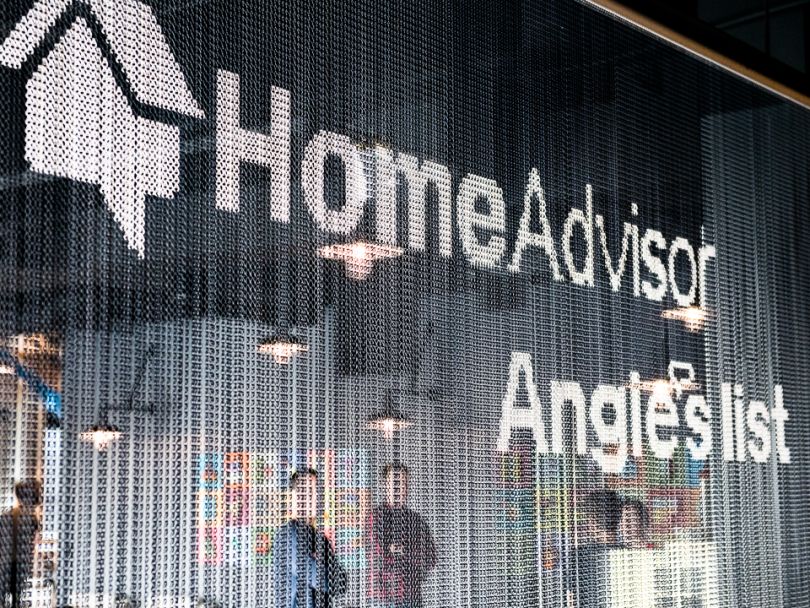
HomeAdvisor is an online marketplace that connects homeowners with industry professionals. In order to give new employees a taste of the “in-office experience,” Sales Trainer Kyle Taylor-Mcleggan said that they hold frequent one-on-one meetings, which allow new hires to receive more face time and attention from seasoned employees.
What’s the biggest challenge you’ve faced onboarding new employees remotely?
The biggest challenge we’ve faced onboarding new employees remotely would be giving them the “in-office” experience. In the office, we can use our body language, quick-hit huddles and other spur-of-the-moment tactics to get a point across and gain buy-in from new hires. Those things are a lot tougher to do using Zoom. For us, teaching the content was straightforward but the delivery, execution and timing was somewhat of a challenge. Everything we do in training is extremely calculated and specific, so we’ve had to become a lot more creative to go from the office to teaching virtually.
Our preparation has saved us an abundance of time and stress.”
How have you overcome this challenge?
We have done a lot more one on ones. Interaction is huge and new hires are extremely impressionable, so it is important that we give everyone an abundance of face time and attention. In addition, we have done “all-day Zoom rooms,” where we have an open Zoom for trainees to practice their sales pitches together. This gives a similar feel to how it was when we were in the office. Trainees have admitted that they get excited when they hear one of their peers pitching and, of course, the room erupts when someone makes a sale.
How have you used the lessons you've learned about remote onboarding to improve your overall onboarding process?
The best thing we have done to adapt to this new remote world is not taking anything for granted. I’m not saying that we used to but it’s more important than ever now.
We have found that everything can — and will — run smoothly if we are prepared. Our preparation has saved us time and stress. Our greatest asset has been being prepared with so many new moving parts. Things are a lot different now, and we can no longer rely heavily on our past experiences as we must continue to plan ahead and continue to get better.






